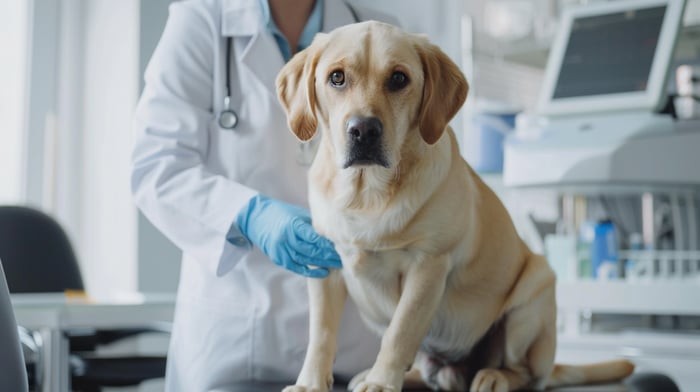Dog Limping Hind Leg: The Overlooked Causes and How to Spot Them
Spotting Symptoms Before It's Too Late

Spotting Symptoms Before It's Too Late
Dogs are not just pets; they are family members. When a dog starts limping, it can be worrisome. Understanding the causes and recognizing the symptoms early can make a significant difference in your dog’s health and quality of life.

What Are the Most Common Dog Leg Injuries That Can Cause Hind Leg Limping?
Dogs, like humans, can suffer from a variety of leg injuries. Common injuries that can cause hind leg limping include sprains, strains, fractures, and ligament tears. These injuries often result from high-impact activities, falls, or even minor accidents during playtime.
According to Dr. Patty Khuly, a veterinarian and author, "The cranial cruciate ligament (CCL) injury is among the most common causes of hind leg limping in dogs. It's akin to an ACL tear in humans and often requires surgical intervention" . Recognizing these common injuries can help you take the necessary steps to ensure your dog gets the proper care and treatment they need.
How Can You Differentiate Between a Minor Sprain and a Serious Injury in Your Dog?

It can be challenging to determine the severity of your dog’s injury just by looking. Minor sprains might cause a slight limp, while serious injuries like fractures or ligament tears can lead to severe limping or even an inability to use the leg.
Observing your dog’s behavior and physical symptoms is essential. If your dog is reluctant to put weight on the hind leg, shows signs of swelling, or cries out in pain when the leg is touched, it might indicate a more serious injury. “Dogs often hide their pain, so it’s important to look for subtle signs like changes in gait, licking the injured area, or decreased activity,” advises Dr. Karen Becker, an integrative wellness veterinarian.
What Overlooked Causes Might Lead to a Dog Limping Hind Leg That Owners Often Miss?

Sometimes, the causes of a dog's limping hind leg are not immediately obvious. Conditions like hip dysplasia, arthritis, or even bone cancer can lead to limping but are often overlooked in the early stages. Hip dysplasia is a genetic condition where the hip joint doesn’t fit properly into the socket, leading to pain and limping.
Arthritis, an inflammation of the joints, is another common cause, especially in older dogs. “Owners often mistake limping due to arthritis as just a sign of aging, but it’s a condition that needs management and treatment,” notes Dr. James St. Clair, a veterinarian specializing in joint health.
Why Might Physical Therapy for Dogs Be a Beneficial Treatment for Hind Leg Limping?
Physical therapy can be incredibly beneficial for dogs suffering from hind leg limping. It helps to improve mobility, reduce pain, and strengthen the muscles around the affected area. Physical therapy treatments can include exercises, massage, and even the use of specialized equipment like treadmills.
Dr. Marty Becker, a renowned veterinarian, explains, “Physical therapy can speed up recovery and improve the overall quality of life for dogs with hind leg injuries. It’s not just about treating the injury but also preventing future problems”. Regular sessions of physical therapy can make a significant difference in your dog’s recovery process.
How Does Canine Hydrotherapy Help in the Recovery of a Dog Limping Hind Leg?
Canine hydrotherapy is another effective treatment for dogs with hind leg injuries. The buoyancy of water reduces the stress on the joints, allowing dogs to exercise without putting too much pressure on the injured leg. This type of therapy can help improve muscle strength, flexibility, and overall cardiovascular health.
“Hydrotherapy is especially beneficial for dogs recovering from surgery or dealing with chronic conditions like arthritis,” says Dr. Jennifer Coates, a veterinary writer and advisor. The resistance of the water also helps build muscle without causing additional pain or strain.
When Should You Consider Using a Dog Hip Brace to Support Your Pet’s Hind Leg?
A dog hip brace can provide much-needed support and stability for dogs with hind leg issues. These braces are designed to reduce pain and inflammation while promoting healing. They are particularly useful for dogs with hip dysplasia, arthritis, or recovering from surgery.
Dr. Terry Cook, an orthopedic veterinarian, recommends, “If your dog is struggling with hind leg support and traditional treatments are not enough, a hip brace can offer additional assistance. It helps stabilize the joint and can significantly reduce discomfort”. Using a hip brace can make a big difference in your dog’s mobility and comfort.
What Are the Signs That Indicate Your Dog Might Need a Dog Joint Supplement?
Joint supplements can be very effective in managing and preventing joint issues in dogs. These supplements often contain ingredients like glucosamine, chondroitin, and omega-3 fatty acids, which support joint health and reduce inflammation.
If your dog is showing signs of stiffness, reluctance to move, or difficulty getting up, it might be time to consider a joint supplement. “Early intervention with joint supplements can help maintain your dog’s mobility and quality of life,” advises Dr. Ernie Ward, a veterinarian and pet health advocate.
How Can Early Intervention and Proper Treatment Prevent Severe Issues From Developing in Dogs With Hind Leg Limping?

Early intervention is key to preventing more severe issues from developing. Recognizing the signs of hind leg limping and seeking prompt veterinary care can prevent conditions from worsening. Proper treatment, which might include medication, physical therapy, or surgery, can significantly improve your dog’s prognosis.
“Delaying treatment can lead to chronic pain and long-term mobility issues,” warns Dr. Ann Hohenhaus, a veterinary specialist at the Animal Medical Center in New York. Regular check-ups and being proactive about your dog’s health are essential steps in ensuring they lead a happy, pain-free life.
The Importance of Dog Longevity
Ensuring your dog lives a long, healthy life is every pet owner’s goal. By understanding and addressing issues like hind leg limping promptly, you can help extend your dog's lifespan and improve their quality of life. Long-term health requires a combination of proper diet, regular exercise, and preventive care.
G-Max Joint Support

G-Max Joint Support Hip & Joint - Bacon Flavor

$59.95
$69.90
8 Key Ingredient Formula: Glucosamine Chondroitin MSM Green-Lipped Mussel Vitamin C Manganese Calcium Sulfate Soy Lecithin … read more
 SUCCESS!
SUCCESS!






